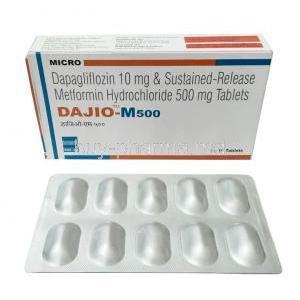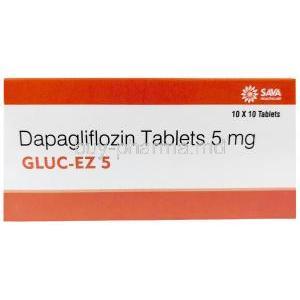Janumet, Sitagliptin/ Metformin
- 1. Introduction to Janumet
- 2. Mechanism of Action
- 3. Approved Uses of Janumet
- 4. Off-Label Uses of Janumet
- 5. Dosage and Administration
- 6. Composition of Janumet
- 7. Storage Recommendations
- 8. Interactions with Other Medications
- 9. Warnings and Precautions
- 10. Common Side Effects of Janumet
- 11. Serious Side Effects and Adverse Reactions
- 12. Important Precautions
- 13. Administration in Special Populations
- 14. Overdosage Information
- 15. Handling Precautions
1. Introduction to Janumet
Janumet combines Sitagliptin and Metformin to create a medication for those dealing with type 2 diabetes mellitus by optimizing blood sugar levels and minimizing side effects associated with diabetes management. Sitagliptin boosts levels to stimulate insulin secretion after meals as a DPP‑5 inhibitor, while Metformin works by reducing liver glucose production and improving insulin sensitivity as a biguanide drug. The importance of these medications in managing diabetes cannot be emphasized enough because they offer an approach to controlling blood sugar levels. Janumet was approved by the FDA based on its effectiveness and safety record. This drug is recommended for use alongside diet and physical activity to enhance blood sugar management in adults with type 2 diabetes.
2. Mechanism of Action
How Sitagliptin Works
Sitagliptin works by blocking the DPP enzyme to boost the levels of hormones crucial for controlling how your body processes glucose.
- It encourages the release of insulin from the cells in the pancreas known as beta cells,
- prevents the release of glucagon from alpha cells,
- increases feelings of fullness, and curbs hunger cravings
Role of Metformin in Glucose Regulation
Metformin mainly decreases the production of glucose in the liver and enhances the uptake and utilization of glucose in parts of the body.
- There has been a reduction in both fasting and meal blood sugar levels.
- Improved response to insulin is important for individuals dealing with insulin resistance.
Combined Effects on Blood Sugar Control
When Sitagliptin and Metformin are given in combination as a treatment regimen for diabetes patients, their effects work together to enhance control significantly. This pairing doesn't just help reduce blood sugar levels but decreases the likelihood of hypoglycemia' a frequent issue, in managing diabetes.
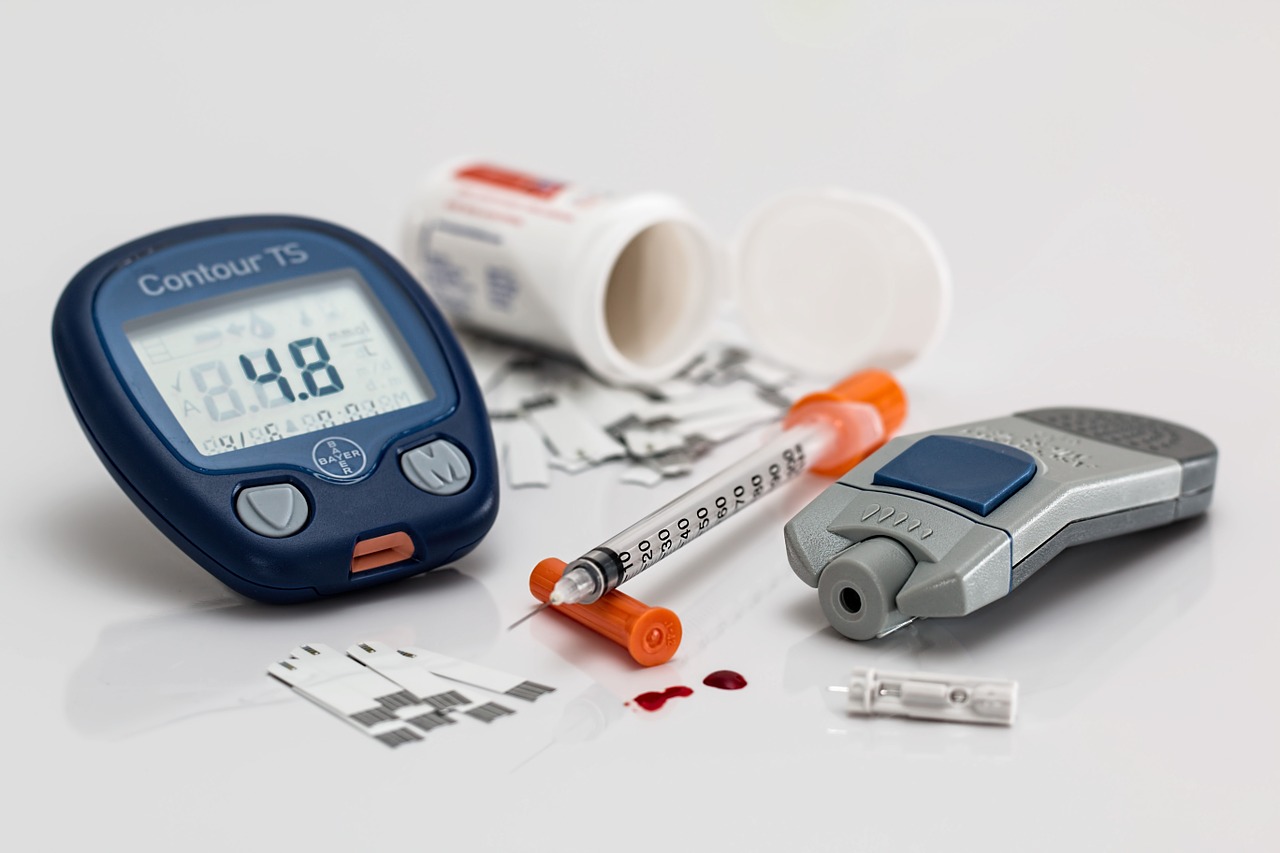
Signs metformin is working
Two indicators that metformin is effective include observing a decrease in blood sugar levels and hemoglobin A ₁ C (which reflects your glucose levels) over the past 2 to 3 months.
3. Approved Uses of Janumet
Treatment of Type 2 Diabetes Mellitus
Role in Combination Therapy
Janumet is commonly used as a component of a treatment plan to address diabetes needs by complementing other oral antidiabetic medications or insulin for customized patient care strategies.
Use in Patients with Cardiovascular Conditions
Recent findings indicate that Janumet could potentially provide advantages for heart health in individuals with existing conditions. This makes it a practical choice for individuals with an increased susceptibility to heart-related issues.
4. Off-Label Uses of Janumet
Metformin for pcos
The use of Janumet in treating PCOS has garnered increased attention lately due to its potential to address insulin resistance commonly linked to the condition. Preliminary research suggests that it may help regulate cycles and enhance fertility results.
Investigational Uses in Type 1 Diabetes
Ongoing studies are looking into how Janumet works for individuals with type 1 diabetes when used alongside insulin therapy to improve blood sugar control and reduce weight gain typically linked to insulin use.
Research on Weight Management
Furthermore, research is ongoing to understand how Janumet could help manage weight for individuals with type 2 diabetes. It may impact control and blood sugar processing, potentially leading to weight reduction in some cases.
5. Dosage and Administration
Recommended Dosage Guidelines for Adults
The usual initial amount of Janumet for grown-ups is commonly based on the requirements of each patient. The standard prescribed amount is 50 mg of Sitagliptin and 1000 mg of Metformin taken two times a day, as recommended dosage levels. Adjustments to this regimen might be made according to how the treatment works and how well it is tolerated by the individual patient.
Adjustments for Renal Impairment
Patients who have kidney issues should make sure to adjust their dosage of Metformin to avoid any problems linked to its buildup by keeping an eye on and checking their kidney function regularly.
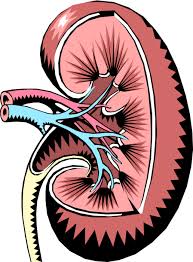
Dosing Considerations for Special Populations
Certain groups of people, like individuals, may need to be given medication with caution because they have a higher chance of kidney problems and changes in how their bodies process drugs.The starting dose should be kept low to reduce any reactions.
6. Composition of Janumet
Active Ingredients: Sitagliptin and Metformin
Janumet is made up of two components.
- Sitagliptin is classified as a DPP‐IV inhibitor drug in the field.
- Metformin is classified as a biguanide medication.
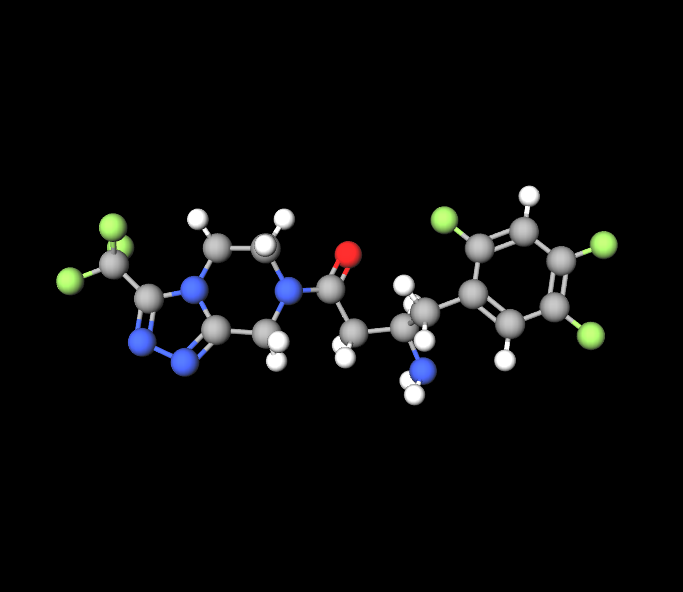

Inactive Ingredients and Their Functions
The formula also contains components that play important roles like stabilizing the medication and improving its absorption, in the body.
Comparison with Other Antidiabetic Medications
Janumet stands out among drugs as it takes a two-pronged approach to managing diabetes, unlike many other treatments that concentrate on insulin function alone.
Sitagliptin vs linagliptin
The outcomes indicated that there was no variance, between linagliptin and sitagliptin regarding effectiveness as they yielded comparable results.
Ertugliflozin sitagliptin
Ertugliflozin functions in the kidneys to inhibit the uptake of glucose (blood sugar), aiding in reducing blood sugar levels, while Sitagliptin assists in regulating blood sugar levels by stimulating the production of substances in the body that prompt the pancreas to release insulin.
Berberine vs metformin
Berberine is often referred to as a replacement for or an alternative to metformin. It serves the purpose of reducing blood glucose levels and enhancing insulin sensitivity over a period of three months, whereas metformin demonstrates quicker action, typically providing its full benefits within 4 to 5 days after initiation.
Metformin vs ozempic
Although metformin is often prescribed as the initial treatment for Type 2 diabetes patients by doctors frequently than Ozempic does help in shedding weight when compared to metformin medication choices; Ozempic has the added benefit of decreasing the chances of experiencing severe cardiovascular incidents such as heart attacks or strokes for individuals, with both diabetes and heart conditions.
Glipizide and metformin
Glipizide and Metformin combined are prescribed for managing blood sugar levels stemming from type 2 diabetes or sugar diabetes, also known as diabetes mellitus type 2. Normally, following a meal, the pancreas secretes insulin to aid in storing surplus sugar for use.
Farxiga and metformin
Farixga and metformin (Glumetza) are often prescribed in combination for managing type 2 diabetes blood sugar levels and HBA(AC while aiding weight loss when compared to using either medication alone based on clinical research findings.
7. Storage Recommendations
Optimal Storage Conditions
Remember to keep Janumet where the temperature is stable and avoid exposing it to much moisture or heat to maintain its effectiveness and shelf life properly.
Handling and Stability Information
Healthcare workers need to be cautious when handling Janumet to preserve its effectiveness. For example, they should make sure the medicine remains in its packaging until it is needed.
Disposal Guidelines for Expired Medication
Proper disposal of expired medications is important; it is recommended that patients adhere to guidelines and return any Janumet to pharmacies, for safe disposal.
8. Interactions with Other Medications
Common Drug Interactions
Janumet may interact with various medications, including:
- Other antidiabetic agents.
- Diuretics.
- Corticosteroids.
Impact on Efficacy and Safety
Interactions between medications like Janumet can impact how well they work and how safe it is to use them with drugs; therefore, it's essential to keep a close eye on blood sugar levels and watch out for any possible side effects that may arise.
Guidelines for Managing Interactions
It is important for healthcare providers to carefully assess the medications that a patient is using in order to handle interactions efficiently in healthcare settings. Regular check-ins and blood tests might be needed to guarantee the results of treatment.
9. Warnings and Precautions
Contraindications for Use
Janumet should not be given to patients in situations to safeguard their well-being, such as in cases:
- Where individuals have severe kidney damage (estimated filtration rate than 30 mL/min).
- Metabolic acidosis is currently active.
- If you have a history of being overly sensitive to Sitagliptin, metformin, or any ingredient in the product formulation.
- It's crucial to keep these contraindications in mind since not following them correctly could result in complications.
Importance of Medical History Review
Before starting Janumet treatment, healthcare providers must review the patient's history to ensure its suitability. Preexisting kidney issues. Maintaining a heart and circulatory system. Possible medicines that could have effects when taken with Janumet.
Specific Warnings Related to Renal Function
The function of the kidneys is crucial in how Metformin behaves in the body processes related to drugs and their movement within the body, known as pharmacokinetics.
- Patients with impaired kidney function have an increased chance of developing a condition called acidosis that could be life-threatening. It is important to prioritize.
- Remember to keep an eye on kidney function on a basis.
- Patients need to be informed about identifying signs of kidney issues, such as alterations in urination patterns or feelings of exhaustion.
Metformin and alcohol
It's advisable to steer clear of alcohol while using metformin because of the potential for acidosis to occur with its combination. Not to mention that alcoholic beverages tend to be calorie-dense and could contribute to putting on extra weight.
Foods to avoid while taking metformin
Try to steer clear of bread, along with its counterparts like rice and white pasta, sugary treats such as candy and soda, indulgences like desserts, and snacks such as chips or crackers, in your diet regimen, if possible. Consuming items that may cause an increase in your blood sugar levels won't exactly render the metformin ineffective; nevertheless, it will put a strain on its efficacy.

10. Common Side Effects of Janumet
Gastrointestinal Issues: Nausea, Diarrhea, etc.
Common side effects associated with Janumet often manifest in the gastrointestinal tract. Patients may experience:
- Nausea
- Diarrhea
- Abdominal discomfort
These symptoms typically diminish over time as the body acclimates to the medication. However, persistent symptoms warrant consultation with a healthcare provider.
Risk of Hypoglycemia
While Janumet is less likely to cause hypoglycemia compared to other antidiabetic agents, the risk still exists, particularly when used in combination with other glucose-lowering medications. Patients should be advised to:
- Recognize early signs of hypoglycemia, such as sweating, shakiness, and confusion.
- Carry a source of glucose for quick management.
Regular blood glucose monitoring is crucial in preventing hypoglycemic episodes.
Monitoring and Management of Side Effects
It's important to stay on top of things and keep an eye out for any side effects that might pop up along the way, so make sure to set up checkups to assess things properly;
- Maintaining control of blood sugar levels.
- Kidney function.
- Feeling some stomach issues.
- Effective communication between individuals receiving care and their healthcare providers improves the handling of treatment side effects.
Sitagliptin weight loss
When the levels of 'incretins’ go up in your body, it also helps to slow down your stomach and intestines. The result is that you may feel less hungry and full quickly when you eat a meal. This could help you lose some weight, which is generally good for managing diabetes.
11. Serious Side Effects and Adverse Reactions
Lactic Acidosis: Causes and Symptoms
Metformin therapy can lead to acidosis, a severe side effect identifiable by the following symptoms:
- high levels of lactate in the blood.
- Symptoms like muscle aches and pains or struggles with breathing and stomach discomfort may indicate a health issue.
- It's important for patients to learn about these signs and symptoms and to seek help if they experience them promptly.
Pancreatitis Risk and Management
When taking Sitagliptin, patients need to be watched for any signs of pancreatitis, as there is a risk associated with its use.
- Experiencing discomfort in the abdomen region.
- Feeling queasy.
- Throwing up.
- When pancreatitis is suspected it is advised to stop taking Janumet and seek assessment.
Other Severe Reactions
Other serious side effects can also occur, such as serious allergic responses.
- Skin responses, such as a rash or the formation of blisters, may occur.
- Prompt medical attention is essential for addressing any incidents.
12. Important Precautions
Recommendations for Patients with Cardiovascular Issues
It's essential to keep an eye, on the heart health of individuals, with existing heart conditions and evaluate Janumet carefully to prevent any worsening of their condition.

Considerations for Patients with Liver Disease
Patients, with liver problems should be careful when using Janumet since the livers function greatly affects how the drug is processed in the body. Its recommended to check liver enzymes to catch any side effects early on.
Monitoring Requirements During Treatment
Patients on Janumet should undergo regular follow-up assessments, including:
- Blood glucose levels.
- Renal function tests.
- Monitoring for signs of lactic acidosis.
Such evaluations ensure the safe and effective management of diabetes.
13. Administration in Special Populations
Guidelines for Elderly Patients
As people age, their chances of developing kidney problems also rise significantly. Therefore, it is crucial to begin with amounts and keep an eye on kidney function. Tailored treatment strategies can help reduce the dangers linked to alterations in drug processing that come with aging.
Recommendations for Pregnant and Nursing Women
It is typically advised to avoid using Janumet while pregnant or breastfeeding because there is no safety information for these situations. To ensure the well being of both the mother and the baby it would be wise to consider treatment options while closely monitoring their health.
Considerations for Pediatric Patients
The effectiveness and safety of Janumet in children have not been confirmed yet; therefore, it is important for healthcare providers to carefully evaluate its use in populations and consider treatment options as a priority.
14. Overdosage Information
Symptoms of Overdose
Taking much Janumet can result in issues like lactic acidosis, which can cause various symptoms such as:
- Feeling extremely tired
- Muscles ache
- Feeling uneasy in the stomach area.
- Swift medical assessment is crucial when dealing with suspected instances of overdose.
Recommended Actions in Case of Overdose
If someone overdoses on a substance or medication, these steps should be followed.
- Please seek help.
- Commence providing care when needed.
- In instances of acidosis medical professionals might also contemplate the option of administering dialysis.
Long-term Effects of Overdosage
The lasting impact of an overdose can lead to a decline in health that may cause organ failure over time and requires monitoring and prompt action to avoid harm.
15. Handling Precautions
Safe Handling Practices for Healthcare Providers
Healthcare professionals need to follow safety measures when handling Janumet, such as wearing protective gear and ensuring the drug is stored correctly to keep its effectiveness intact.
Patient Education on Proper Use
Patient education is vital for the effective use of Janumet. Patients should be informed about:
- The importance of adhering to prescribed dosages.
- Recognizing side effects and when to seek help.
Empowering patients with knowledge enhances treatment outcomes and fosters a proactive approach to diabetes management.
Sitagliptin nursing implications
For a day, you can take Sitagliptin with or without food. Be aware that it may lead to low blood sugar levels, especially for individuals with kidney issues, as the dosage might need to be adjusted based on their kidney function test results.
Disposal of Unused Medication
Safely dispose of unused or expired Janumet by returning it to the pharmacy for proper disposal to avoid consumption or environmental harm.
Sitagliptin alternatives
- Linagliptin (Tradjenta),
- Saxagliptin (onglyza)
- Alogliptin (nesina).
Janumet, Sitagliptin/ Metformin FAQ
- What is the expected action of sitagliptin on type 2 diabetes?
- What is sitagliptin?
- How does sitagliptin work?
- Sitagliptin when to give?
- How sitagliptin is better than vildagliptin?
- Can sitagliptin cause diarrhea?
- Can sitagliptin be crushed?
- Can sitagliptin cause hypoglycemia
- Are sitagliptin and januvia the same?
- Why does metformin cause diarrhea?
- How long does it take for metformin to work
- How long does metformin take to work?
- What is the lowest dose of metformin you can take for pcos?
- How long does metformin stay in your system?
- Can I stop taking metformin when my sugar is back to normal?
- Foods to avoid when taking metformin for PCOS
- How fast does metformin work?
- How to stop metformin diarrhea?
- Why take metformin xr at night?
What is the expected action of sitagliptin on type 2 diabetes?
Sitagliptin works well in reducing HBA 14 and controlling both fasting glucose levels and blood sugar after meals when used alone or with diabetes medications by increasing insulin production during blood sugar and reducing glucagon release.
What is sitagliptin?
Sitagliptin belongs to a group of drugs known as dipeptidyl peptidase‐ (DPP‐ ) inhibitors, which enhance the levels of compounds that reduce blood sugar levels when they are elevated.
How does sitagliptin work?
Sitagliptin aids in regulating blood sugar levels by prompting the body to produce insulin from the pancreas and signaling the liver to reduce glucose production when blood sugar levels are elevated.It is important to note that this medication is not effective for individuals with insulin-type 1 diabetes.
Sitagliptin when to give?
Take Sitagliptin orally in tablet form daily with or without food at the time each day as instructed on your prescription label; seek clarification from your doctor or pharmacist if needed.
How sitagliptin is better than vildagliptin?
Patients who were prescribed vildagliptin showed an average blood glucose level over a 24-hour period compared to those who were prescribed sitagliptin.
Can sitagliptin cause diarrhea?
The rate of diarrhea linked to sitagliptin was 4,48%.
Can sitagliptin be crushed?
Make sure not to break or crush the tablets before swallowing them whole.
Can sitagliptin cause hypoglycemia
Sitagliptin typically does not lead to blood sugar levels when used alone; however, it may result in hypoglycemia when combined with diabetes medications like insulin or gliclazide. Early indications of low blood sugar encompass feelings of hunger.
Are sitagliptin and januvia the same?
Januvia includes sitagliptin as its ingredient, which belongs to the class of dipeptidyl peptidase‐ 04 (DPP‐04 ) inhibitors.
Why does metformin cause diarrhea?
When people begin taking metformin medication and experience diarrhea as a side effect of the treatment, this is believed to be caused by alterations in the composition of the gut bacteria. Additionally, it is associated with levels of glucose and bile acid in the intestines along with a rise in GL P concentration.
How long does it take for metformin to work
Metformin typically does not cause a drop in blood sugar levels; its impact is commonly observed within two days of starting the medication, and the substantial changes may take about four to five days to manifest, depending upon the individual's dose utilized.
How long does metformin take to work?
Metformin doesn't work away at blood sugar levels; it typically takes about 48 hours for the effects to kick in after taking the medication, and the most significant changes may take around 4 to 5 days to show up, based upon a person's prescribed dosage.
What is the lowest dose of metformin you can take for pcos?
For adults with PCOS, the initial dosage is 500 mg per day, which will be adjusted gradually by your doctor over a week.
How long does metformin stay in your system?
Metformin stays in your body for around 4 days, corresponding to 96 hours, due to its elimination life of roughly 17 hours multiplied by 1 day. It takes a bit more for metformin to clear out completely.
Can I stop taking metformin when my sugar is back to normal?
Make sure to keep on with your medication unless advised otherwise by your healthcare provider. It can be tough to start a long-term prescription. You may consider quitting if you experience side effects, but it's not advisable to do so.
Foods to avoid when taking metformin for PCOS
To support the effectiveness of metformin in managing blood sugar levels more effectively, try to steer clear of bread and pasta as well as sugary treats, like candy and soda.
How fast does metformin work?
Metformin doesn't immediately lower blood sugar levels; its effects typically become evident within 48 hours of starting the medication. Substantial changes usually take 4 to 5 days to manifest, but this can vary depending on the individual's dosage amount.
How to stop metformin diarrhea?
Make sure to drink lots of fluids all day, including at least one cup of liquid each time you experience diarrhea, to stay hydrated. Stay nourished with small meals that include some salty options like soup or sports drinks and foods rich in potassium, such as bananas.
Why take metformin xr at night?
If you are prescribed extended-release metformin medication, it is recommended to take it a day in the evening after your meal of the day for optimal effectiveness in managing your blood sugar levels.




























